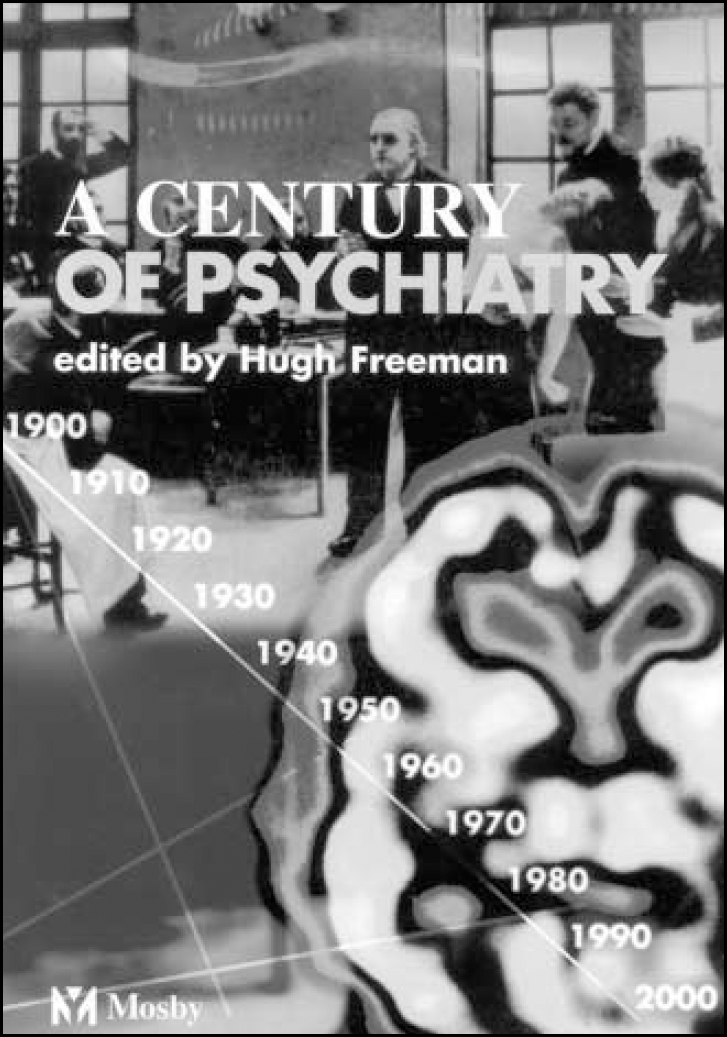The publication of this book represents a major achievement. Running to over 90 chapters and involving 70 authors, it covers the development of psychiatry during the past 100 years. It takes a broad view, including the discovery of physical treatments, the proliferation of psychological therapies, the growth of sub-specialities, the dark days of Nazi psychiatry, the abuses in the Soviet Union, the scandal of Leros, Basaglia's social experiment in Italy, and the evolution of services outside Europe and America. It also finds space to offer potted biographies of the leading clinicians and theorists in the field, as well as considering specific psychiatric syndromes. In the final chapters, several writers speculate on psychiatry over the next 100 years.

The book is also attractively packaged. In large format, it contains numerous illustrations and consists of 10 sections, divided into short and, for the most part, readable chapters. Each section begins with a brief survey of key historical events and ends with a reading list. The chapters are unencumbered by the usual academic apparatus of footnotes and avoid the often dense prose of the professional historian.
An important aspect of this book is that it once again makes the history of psychiatry accessible and relevant to clinicians. A perhaps unforeseen consequence of the recent outburst of interest in the subject has been the redirection of historical papers from mainstream publications to the more specialised journals. Thus, the average psychiatrist is less likely to be exposed to papers examining the historical aspects of the discipline. For the trainee interested in historical matters, or for the casually curious practitioner, it is likely that a foray into the academic historical journals, with their relentless scholarly tone, may prove rather off-putting. This book provides a determinedly populist account, which psychiatrists may find more inviting.
The front cover illustration contains two images: one is of the great French neurologist, Jean Marie Charcot, lecturing to a class of doctors on the subject of hysteria; the second is of a brain scan. These images reflect two of the major themes in psychiatry over the past century. Charcot's views influenced Sigmund Freud, whose work has, in turn, given rise to the plethora of psychological therapies we have today. The brain scan symbolises the neurobiological approach to mental illness. While the first approach emphasises the value of talking and of considering the patient as an individual, the second sees mental disturbance in terms of brain disease and favours physical treatments. As Edward Shorter notes in his chapter, these opposing perspectives have formed the backdrop to the development of psychiatry over the past 100 years.
The chapters are written mainly by psychiatrists. This has the advantage of making the subject clinically relevant and of drawing on the author's inside knowledge of the area. However, it can result in a lack of critical distance, with clinicians offering an optimistic assessment of their own disciplines. Many chapters follow a similar course: the humble beginnings are sketched, the steady progress described and, finally, a bright future is forecast. If there is a criticism of the book, it relates to the lack of space for dissenting voices. This is seen, for example, in the chapter on Freud. One would not gather from this account and the accompanying reading list that there is a vast scholarly industry deeply critical of Freudian theory. Likewise, in the chapters on physical therapies and advances in the neurosciences, there is no discussion of the limitations of a purely biological account of mental illness. It is left to Birley, in a thoughtful chapter on the care of patients with long-term illness, to point to the shortcomings of an exclusively ‘scientific’ approach to therapy. Social factors, he argues, are also crucial.
With an enterprise like this, it is always easy to complain that important subjects have been omitted. The range of the book is undeniably impressive, but there might have been more about the history of psychiatry as seen by patients, although there is a short account of the users' movement. There is little about Jaspers, despite his influence on the development of psychopathology, and there is no mention of George Robertson, the first Professor of Psychiatry in Scotland and early pioneer of out-patient clinics, voluntary admissions and psychiatry for children.
Despite these reservations, this book can be recommended. It offers a useful and reader-friendly introduction to the many developments that have taken place in psychiatry over the past 100 years. Every psychiatric library should have a copy.



eLetters
No eLetters have been published for this article.